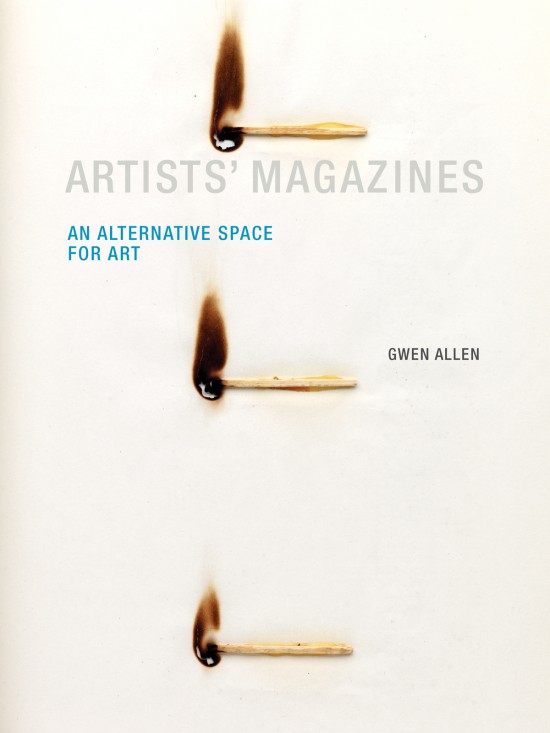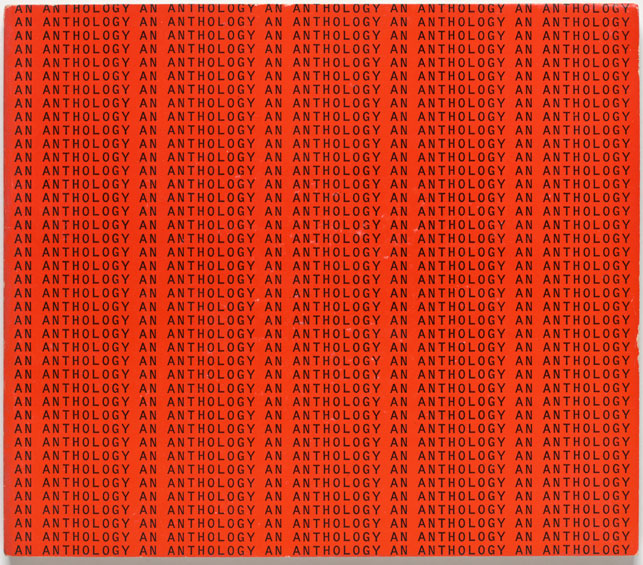Vision, 1 (1975)
Filed under magazine | Tags: · art, california, conceptual art

The first issue of the magazine published between 1975 and 1981 in Oakland, California.
“Museums and magazines, […] because they do not talk to artists, sometimes get hold of an art idea previously unknown to them and mishandle it. This is happening now with performance or action art. Galleries and art magazines cause confusion by mixing it up with dance, theater, music and other forms outside the visual arts.”—Tom Marioni, 1975. Published in the introduction to the first issue of his magazine Vision, an “artist-oriented publication, presenting works and material only from artists.”
With contributions by California artists Bruce Conner, Paul Kos, Bonnie Sherk, Linda Montano, Larry Bell, Robert Irwin, Michael Asher, Bruce Nauman, Ed Ruscha, Allen Ruppersberg, Chris Burden, Eleanor Antin, Barbara T. Smith, and Wayne Thiebaud, among others.
Edited by Tom Marioni
Published by Kathan Brown, Crown Point Press, Oakland, CA, 1975
67 pages
via East of Borneo
Vision Magazine: Idea-Oriented Art in Print (1975–1981) (article by Tom Marioni, 2011)
Comment (0)Gwen Allen: Artists’ Magazines: An Alternative Space for Art (2011)
Filed under book | Tags: · art, artists book, conceptual art, fluxus, magazine, mail art, photography, poetry, publishing

“Magazine publishing is an exercise in ephemerality and transience; each issue goes out in the world only to be rendered obsolete by the next. To publish a magazine is to enter into a heightened relationship with the present moment. During the 1960s and 1970s, magazines became an important new site of artistic practice, functioning as an alternative exhibition space for the dematerialized practices of conceptual art. Artists created works expressly for these mass-produced, hand-editioned pages, using the ephemerality and the materiality of the magazine to challenge the conventions of both artistic medium and gallery. In Artists’ Magazines, Gwen Allen looks at the most important of these magazines in their heyday (the 1960s to the 1980s) and compiles a comprehensive, illustrated directory of hundreds of others.
Among the magazines Allen examines are Aspen (1965–1971), a multimedia magazine in a box—issues included Super-8 films, flexi-disc records, critical writings, artists’ postage stamps, and collectible chapbooks; Avalanche (1970-1976), which expressed the countercultural character of the emerging SoHo art community through its interviews and artist-designed contributions; Art-Rite (1973-1978), an irreverent zine with a disposable, newsprint format; Real Life (1979-1994), published by Thomas Lawson and Susan Morgan as a forum for the Pictures generation; 0 to 9 (1967–1969), a mimeographed poetry magazine founded by Vito Acconci and Bernadette Meyer; FILE (1972–1989), founded by the Canadian collective General Idea, its cover design a sly parody of Life magazine; and Interfunktionen (1968–1975), founded to protest the conservative curatorial strategies of Documenta. These and the other magazines Allen examines expressed their differences from mainstream media in both form and content: they cast their homemade, DIY quality against the slickness of an Artforum, and they created work that defied the formalist orthodoxy of the day. (A work by John Baldessari from the late 1960s shows a photograph of Artforum, captioned “THIS IS NOT TO BE LOOKED AT.”) Artists’ Magazines, featuring abundant color illustrations of magazine covers and content, offers an essential guide to a little-explored medium.”
Publisher MIT Press, 2011
ISBN 0262015196, 9780262015196
300 pages
Reviews: Maarten van Gageldonk (Tijdschrift voor Tijdschriftstudies, 2012), Lucy Mulroney (West 86th, 2012), Alexander Provan (Bidoun, 2011), Dave Dyment (Magenta, 2012), Guy Crucianelli (PopMatters, 2011).
PDF (removed on 2018-8-20 upon request from publisher)
Comment (0)La Monte Young, Jackson Mac Law (eds.): An Anthology of Chance Operations (1963)
Filed under artist publishing | Tags: · art, avant-garde, conceptual art, fluxus, music, poetry

A source-book of early Fluxus classics. A collection of scores, poetry, dance constructions, and other avant-garde work. Includes Henry Flynt’s first essay on concept art.
When the poet Chester Anderson, publisher of Beatitude, exited New York for California in 1959, he asked La Monte Young to edit Beatitude East, composed from the performance scores Young had collected in Berkeley and New York. In this he was aided by Jackson Mac Low, who had attended Cage’s composition course at the New School for Social Research and worked at the Living Theater with Julian Beck and Judith Malina.
Mac Low and Young provided Maciunas with connections to “beat” ideology, encouraging him not only to present radical programming at AG Gallery, but to design An Anthology, and to organize the initial 1962 Fluxus Festival in Wiesbaden, Germany. All of this was contemporaneous.
Maciunas supplied the paper, design and some money for the publishing of An Anthology, according to Henry Flynt, and had it ready for printing by October 1961. It was finally published by Young and Mac Low in 1963 as:
AN ANTHOLOGY of chance operations concept art anti-art indeterminacy improvisation meaningless work natural disasters plans of action stories diagrams Music poetry essays dance constructions mathematics compositions, BY GEORGE BRECHT, CLAUS BREMER, EARLE BROWN, JOSEPH BYRD, JOHN CAGE, DAVID DEGENER, WALTER DE MARIA, HENRY FLYNT, YOKO ONO, DICK HIGGINS, TOSHI ICHIYANAGI, TERRY JENNINGS, DENNIS, DING DONG, RAY JOHNSON, JACKSON MAC LOW, RICHARD MAXFIELD, ROBERT MORRIS, SIMONE MORRIS, NAM JUNE PAIK, TERRY RILEY, DITER ROT, JAMES WARING, EMMETT WILLIAMS, CHRISTIAN WOLFF, LA MONTE YOUNG/LA MONTE YOUNG – EDITOR/GEORGE MACIUNAS – DESIGNER.
The first edition (it was reprinted in 1972 by Hundermark, Germany) contains 67 leaves and three inserts. It includes multicolored and onionskin paper, card stock and two envelopes. The text was printed in offset with a heavy paper cover, collated manually with a staple and perfect binding.
Self-published, New York, Spring 1963
Layout by George Maciunas
120 pages
PDF (36 MB, updated on 2012-7-9)
Comment (1)
